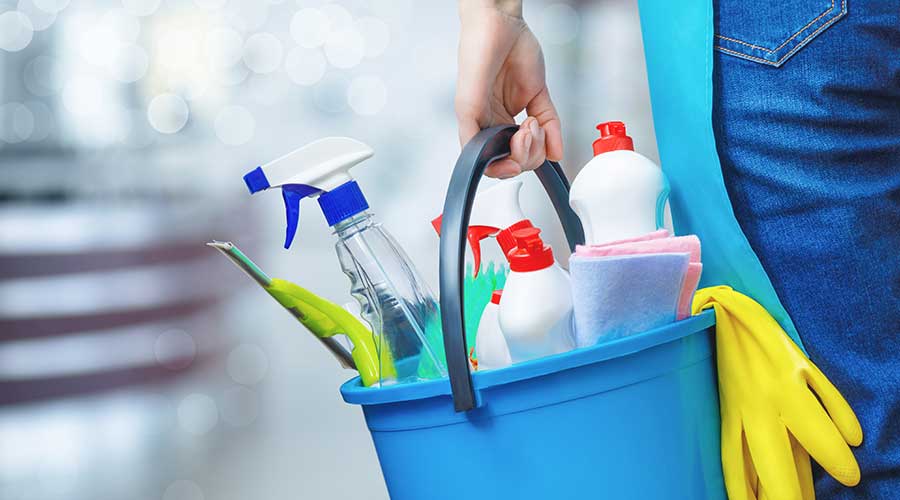Environmental services (EVS) teams already have a good amount to deal with when cleaning and disinfecting healthcare facilities. Adding to that list is a phenomenon known as quat binding, which comes from one of the many chemicals EVS teams use. In this manufacturer roundtable, Healthcare Facilities Today speaks with disinfectant manufacturers about quat binding and how EVS teams can combat it.
Is quat binding an issue in healthcare facilities and how can EVS teams prevent it?
“Quaternary ammonium compounds (quats) can bind to cotton cloths impacting the disinfectant’s efficacy. For this reason, microfiber cloths are recommended when using liquid disinfectants such as dilutables, ready-to-use sprays or pull top solutions.
It’s important to note microfiber cloths must be laundered following specific guidelines including laundering separately from other items to maintain their efficacy. Additionally, the lifespan of microfiber cloths is finite, and it is very difficult to track the number of launderings of individual cloths. EVS teams can avoid this issue by using ready-to-use (RTU) disposable disinfecting wipes. Not only is the issue of quat binding resolved but dilution errors are a non-issue with RTU disinfecting products.”
— Doe Kley, infection prevention fellow, Clorox Healthcare’s Clinical and Scientific Affairs Team
“Quat binding refers to a phenomenon that affects the effectiveness of certain disinfectants, particularly those containing quaternary ammonium chloride, or ‘quats’. Quats are commonly used in disinfectants because they're effective against a wide range of germs, bacteria, and viruses. However, when used incorrectly, quats can become absorbed into cleaning materials like cloths and mops, reducing disinfecting power over time.
The science behind quat binding:
- Quats are positively charged ions, while natural textiles like cotton and other fibers are negatively charged.
- This positive-negative attraction causes the quats to bind to the fibers of the cleaning material instead of staying on the surface to be disinfected.
- Repeated use of quat-bound cloths can spread bacteria and other pathogens instead of killing them, leading to the development of difficult-to-kill quat-resistant bacteria.
The overall problem:
- When quats are bound to the cleaning material, they're not available to kill germs on the surface. This reduces the overall effectiveness of the disinfectant.
- Studies have shown that quat binding can significantly decrease the concentration of quats on cleaning cloths, even by half within a short soaking time.
- This can lead to insufficient disinfection and potentially the development of germs resistant to the disinfectant.
Preventing quat binding:
- Avoid soaking cleaning fabric in quat disinfectant solutions for extended periods of time.
- Use fresh solution for each cleaning task instead of reusing the same solution repeatedly.
- Consider using microfiber cloths, which are less prone to quat binding than cotton.
- Follow the manufacturer's instructions for the specific disinfectant you're using.
Overall, quat binding is a crucial concept to understand for proper hygiene and sanitation practices. By being aware of this phenomenon and taking steps to prevent it, you can ensure that your disinfectants are working effectively to protect yourself and others from harmful germs. Luckily, there are many cleaning alternatives you can use in lieu of quats, with SteraMist iHP standing out as a more effective and comprehensive disinfection solution.”
— Spokesperson from TOMI Environmental Solutions Inc.
Jeff Wardon, Jr. is the assistant editor for the facilities market.

 Making the Energy Efficiency Case to the C-Suite
Making the Energy Efficiency Case to the C-Suite How to Avoid HAIs This Flu Season
How to Avoid HAIs This Flu Season Design Phase Set to Begin for Hospital Annex at SUNY Upstate Medical
Design Phase Set to Begin for Hospital Annex at SUNY Upstate Medical Building Hospital Resilience in an Era of Extreme Weather
Building Hospital Resilience in an Era of Extreme Weather Ennoble Care Falls Victim to Data Breach
Ennoble Care Falls Victim to Data Breach